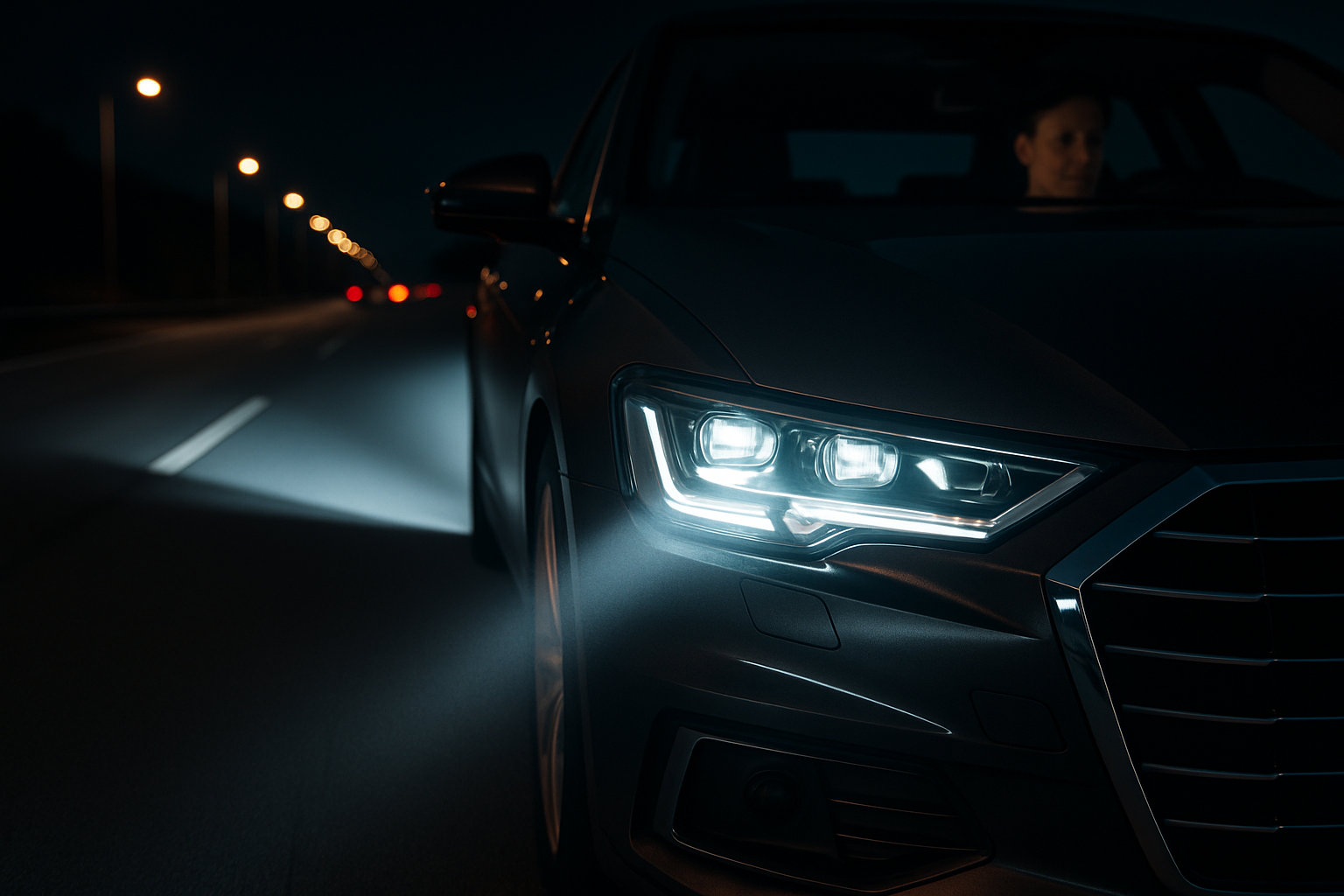Hyundai Ioniq 6 review: futuristic aerodynamics and real savings
In the electric sedan market, the Hyundai Ioniq 6 occupies a unique niche between the premium segment and mass-market models. It beats the Tesla Model 3 in terms of design and offers better fuel economy than the Polestar 2. While the Audi e-tron GT is more expensive, Hyundai offers excellent value for money while remaining futuristic and practical.

Aerodynamic Design That Turns Heads
The Hyundai Ioniq 6’s most striking feature is undoubtedly its aerodynamic silhouette. With a drag coefficient of just 0.22, it ranks among the most aerodynamically efficient production cars available today. This isn’t merely about aesthetics—though the streamlined, almost teardrop shape certainly attracts attention. The carefully sculpted body significantly contributes to the vehicle’s impressive range and efficiency metrics.
Every element of the exterior design serves a purpose, from the active air flaps at the front to the ducktail spoiler at the rear. Even the pixel-inspired lighting elements that have become a signature of Hyundai’s electric vehicle lineup are integrated to minimize disruption to airflow. This functional approach to design gives the Ioniq 6 a distinctive appearance that stands out in a sea of increasingly similar electric sedans without sacrificing performance.
Fast Charging Capabilities for Modern Lifestyles
Built on Hyundai’s dedicated Electric-Global Modular Platform (E-GMP), the Ioniq 6 features 800-volt architecture that enables exceptionally quick charging. When connected to a 350kW DC fast charger, the battery can go from 10% to 80% capacity in just 18 minutes—a time competitive with the fastest-charging EVs on the market. For context, that’s enough time to add approximately 200 miles of range during a brief coffee stop.
The vehicle also supports convenient 400-volt charging infrastructure without requiring additional adapters. For home charging, the onboard 10.9kW charger can fully replenish the battery overnight when connected to a Level 2 charger. This versatility in charging options makes the Ioniq 6 particularly well-suited to various owner lifestyles, from urban dwellers relying on public infrastructure to suburban owners with home charging solutions.
Comfortable Interior with Thoughtful Innovation
Step inside the Ioniq 6, and you’re greeted by a cabin that balances technological sophistication with genuine comfort. The flat floor—a benefit of the dedicated EV platform—creates an airy, spacious environment, while the minimalist dashboard houses dual 12.3-inch screens for instrumentation and infotainment. Ambient lighting with 64 colors allows for personalization of the interior atmosphere.
Perhaps most impressive is Hyundai’s attention to sustainable materials. Depending on the trim level, the Ioniq 6 features recycled PET fabric made from discarded plastic bottles, bio-paint derived from vegetable oils, and carpeting manufactured from fishing nets recovered from the ocean. These eco-friendly touches don’t compromise luxury—the seats provide excellent support for long journeys, and road noise is remarkably well-suppressed thanks to extensive sound insulation and the aerodynamic body design.
Long Range Performance That Exceeds Expectations
The Ioniq 6 delivers impressive range figures that outperform many competitors in its price bracket. The rear-wheel drive Long Range variant achieves an EPA-estimated 361 miles per charge, placing it among the longest-range electric vehicles available today. Even the all-wheel drive version maintains a respectable 316-mile range estimate.
In real-world driving conditions, the efficiency is equally impressive. The RWD model achieves approximately 4.0 miles per kWh in mixed driving, outperforming the Tesla Model 3 Long Range in energy consumption. This efficiency doesn’t come at the expense of performance—the AWD model produces 320 horsepower and 446 lb-ft of torque, enabling a 0-60 mph time of around 5 seconds. Though not as blistering as some performance EVs, this acceleration strikes a sensible balance between responsiveness and efficiency.
Safety and Driver Assistance Features
Hyundai has equipped the Ioniq 6 with an extensive suite of advanced driver assistance systems under its SmartSense package. Standard features include forward collision avoidance, lane keeping assist, blind-spot collision avoidance, and highway driving assist. Higher trims add more sophisticated systems like remote smart parking assist and a surround-view monitor.
The Highway Driving Assist 2 system deserves special mention for its effectiveness. It combines adaptive cruise control with lane centering and can even assist with lane changes when the turn signal is activated. While not a fully autonomous system, it significantly reduces driver fatigue on long highway journeys, representing a tangible benefit for commuters and road-trip enthusiasts alike.
Pricing and Model Comparison
The Hyundai Ioniq 6 offers strong value when compared to its main competitors in the electric sedan segment, balancing premium features with accessible pricing. Here’s how it stacks up against key rivals:
| Model | Starting MSRP | Range (miles) | Fast Charging | Key Features |
|---|---|---|---|---|
| Hyundai Ioniq 6 SE RWD | $42,450 | 361 | 10-80% in 18 min | Aerodynamic design, dual 12.3” screens |
| Tesla Model 3 RWD | $40,240 | 272 | 10-80% in 25 min | Minimalist interior, Autopilot |
| Polestar 2 Single Motor | $49,800 | 320 | 10-80% in 35 min | Google-based infotainment, Scandinavian design |
| BMW i4 eDrive35 | $52,200 | 276 | 10-80% in 32 min | Luxury interior, iDrive system |
Prices, rates, or cost estimates mentioned in this article are based on the latest available information but may change over time. Independent research is advised before making financial decisions.
The Ioniq 6 stands out with class-leading range in its base configuration while maintaining competitive pricing. Although the Tesla Model 3 has a lower entry price, the Ioniq 6 offers more standard features and significantly greater range. Moving up the trim ladder, the Limited AWD variant reaches approximately $57,000 but includes features typically found in luxury vehicles costing considerably more.
Conclusion
The Hyundai Ioniq 6 represents a thoughtful approach to electric mobility that prioritizes efficiency and real-world usability without sacrificing style or comfort. Its distinctive aerodynamic design isn’t merely for show—it directly contributes to class-leading range and efficiency. With fast charging capabilities, a comfortable, tech-filled interior, and comprehensive safety features, the Ioniq 6 makes a compelling case as one of the most well-rounded electric sedans available today. For buyers seeking an EV that blends practicality with a touch of futurism, the Ioniq 6 delivers exceptional value and genuine everyday appeal.




